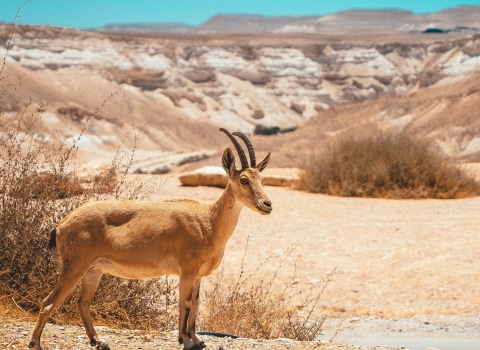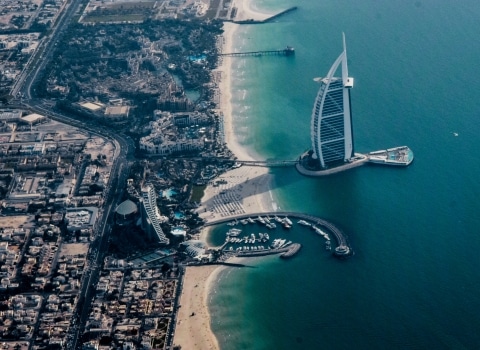A culture apart at the heart of Israel
Set among the hills of northern Israel — soft, green in spring, dry and golden by late summer — the Druze villages don’t immediately call attention to themselves. Quiet homes. A rhythm that doesn’t seem to follow the clock. What draws people in is something else: a way of living that feels… undisturbed. The Druze, a religious community with roots stretching back nearly a thousand years, keep to themselves without shutting the world out. There’s an ease to how they’ve blended into Israeli life, while holding on to what matters most to them.
The surface says little. To get a glimpse of more, it helps to walk slowly. Sit a bit longer. Ask fewer questions at first. And maybe start in the village of Daliyat al-Karmel, perched just south of Haifa. The streets aren’t dramatic, but the details pull you in — stalls overflowing with olives and za’atar, men sipping strong coffee in the shade, handwoven fabrics that carry stories without explanation.
👉 Travelers looking for more than just scenery might want to speak with local guides in Israel. Some of them are Druze themselves — which can make all the difference between passing through and actually being welcomed in.
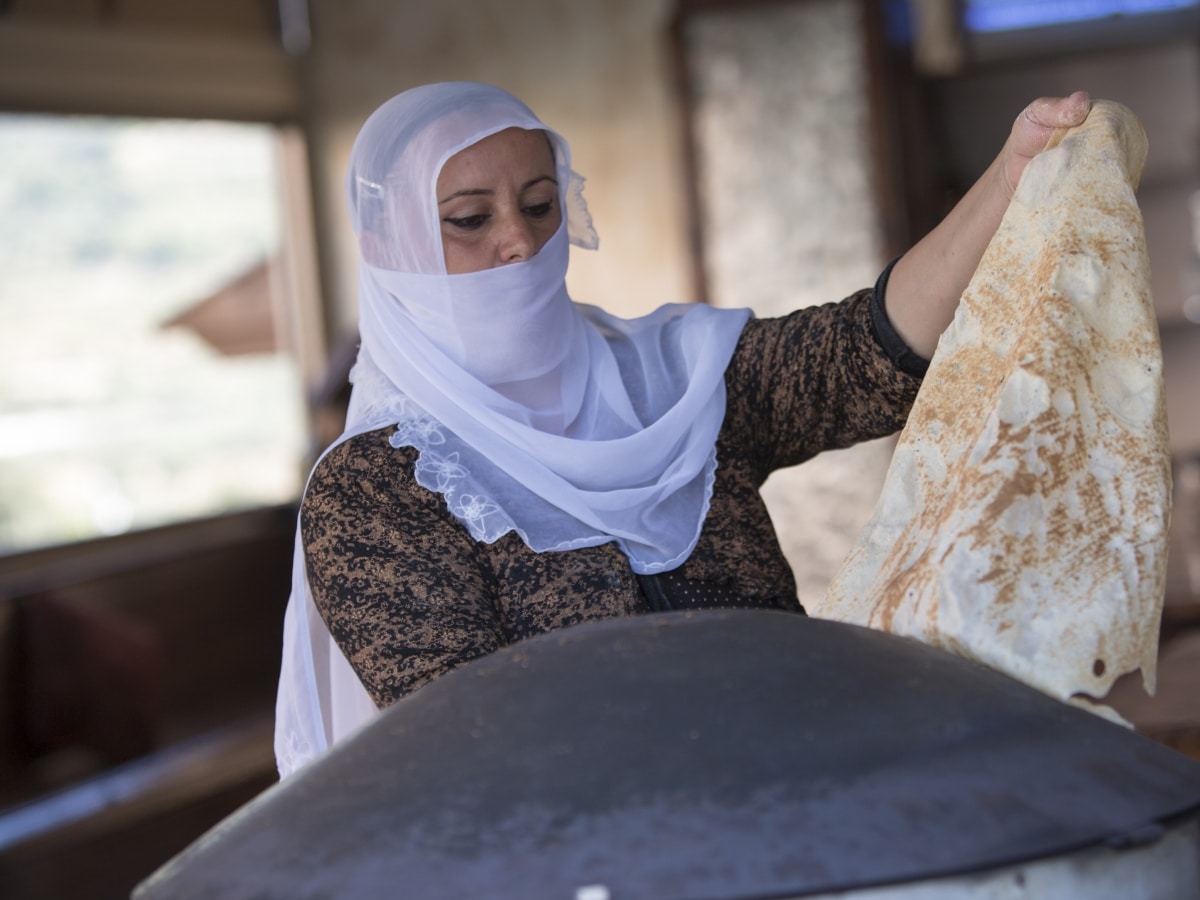
Who are the Druze? A plural and mysterious identity
The Druze community — hard to define in a single sentence, and maybe that’s the point — occupies a singular place in the religious landscape of the Middle East. Emerging from an esoteric current in the 11th century, within the broader frame of the Fatimid Empire, their faith split early from Ismaili Shia Islam. What took shape was something else entirely: a religion shaped by Greek philosophical ideas, Sufi influences, and layers of Gnostic thought. Quietly complex.
Their name? Taken from Mohammad al-Darazi, one of the movement’s first preachers. Though ironically, his views were later rejected by the very people whose identity would bear his name. It’s Hamza ibn Ali who’s considered the actual architect of the doctrine, having laid down its spiritual foundations sometime around the year 1017.
A closed religion, an open culture
Druze beliefs are not open to public reading. Their sacred texts, the Epistles of Wisdom (Rasa’il al-Hikma), are studied only by the Uqqal, those deemed spiritually ready — a select group, distinct from the larger community. No conversions. Not in or out. One is born into the Druze path, or not at all.
And yet, in daily life — especially in Israel — there’s openness. A curiosity, even, toward others. The Druze in Israel make up around 1.6% of the population, just over 140,000 people. Their level of civic engagement is unusual in the region. Military service, public administration, universities — they take part fully, sometimes holding significant political roles.
Some see this as a commitment to the state, others as a protective strategy. Perhaps both. Either way, the result is a community that’s deeply integrated, without losing itself.
Most live in elevated or once-remote areas. In the Mount Carmel region, there’s Isfiya and Daliyat al-Karmel. In Galilee, villages like Maghar, Peki’in, Yarka, and Julis. And across the Golan Heights, Majdal Shams holds its own distinct rhythm.
A mosaic religious diaspora: beyond Israel
The Druze community extends far beyond Israel’s borders — though rarely with visibility. Estimates place the global population between 1 and 2 million, spread mainly across Lebanon, Syria, Israel, and Jordan.
- In Lebanon, they form a notable minority — around 5% of the population. Most live in the Chouf and Mount Lebanon regions. Their political influence has long been significant, particularly through the Progressive Socialist Party, founded by Kamal Jumblatt and later led by his son, Walid Jumblatt.
- In Syria, the heart of Druze life beats around Jabal al-Druze, near Suwayda. Historically, this region saw fierce resistance against both Ottoman and French rule, especially in the 1920s. Today, their position is more discreet — cautious, measured — but relatively stable even amidst ongoing conflict.
- In Jordan, though fewer in number, the Druze benefit from official recognition. The Hashemite monarchy has long regarded them as loyal citizens, granting certain civil and religious freedoms.
Smaller pockets exist elsewhere — in South America, particularly Venezuela and Brazil, or in parts of Canada and the United States. There, cultural associations help maintain a sense of continuity, even far from ancestral hills.
Druze hospitality, a sacred tradition
Hospitality — not as a gesture, but as a rule. Among the Druze, this isn’t just custom, it’s foundational. Guests are greeted with coffee, food, conversation — not for show, but from something deeper: a social ethic shaped by loyalty, community, and quiet respect for the unknown. For travelers, this openness can feel disarming. But for the Druze, it’s simply how things are done.
Israel's main Druze villages
Daliyat al-Karmel: the beating heart of the Druze community
Region: Mount Carmel, 17 kilometers from Haifa
Among all the Druze villages scattered across Israel, Daliyat al-Karmel stands out — not just for its size, but for the atmosphere it carries. Perched on the green slopes of Mount Carmel, about 20 kilometers from Haifa, the village feels both grounded and quietly proud.
There’s something in the air. It might be the scent of za’atar and roasted nuts drifting from the market. Or maybe it’s the mix of color and sound — local artisans displaying embroidered shawls, spice vendors calling out soft greetings, the rhythm of casual conversation.
On market days, the energy shifts slightly. Tables overflow with vegetables still clinging to earth, trays of mansaf steaming in the morning sun, jars of homemade labneh next to bunches of mint. Visitors wander, sample, chat — often staying longer than planned. A smile, more often than not, is part of the exchange.
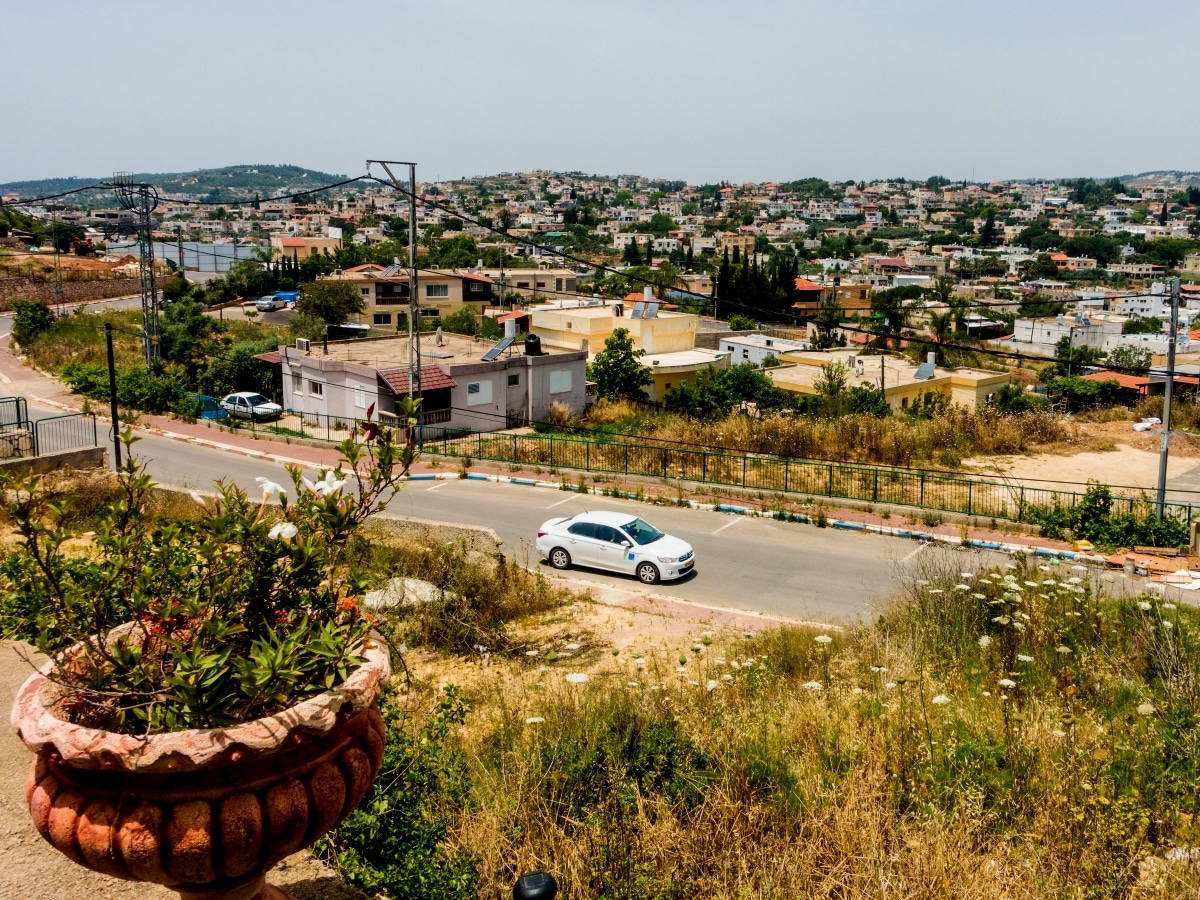
Sights in Daliyat al-Karmel
Daliyat al-Karmel isn’t just a village — it feels more like an open doorway into the everyday world of the Druze. Perched up on Mount Carmel, the place doesn’t push itself forward, yet offers a quiet kind of richness. Corners to explore, details to notice. Sights that don’t demand attention, but reward it.
Here are a few worth wandering toward:
- The Druze Heritage Museum
Inside a stone house typical of Mount Carmel, the museum doesn’t overwhelm — it invites. Rooms filled with old tools, handwoven clothes, cooking pots, religious texts. Nothing staged. Just traces of how life was, and in many ways, still is. Sometimes a local guide leads the way, sharing stories that drift beyond the display cases. It’s one of those places that lingers afterward. - The House of Sir Laurence Oliphant
A name that few know well, but whose story stays with you. This British writer and diplomat settled here in the 19th century, drawn to the slopes of Carmel. His home — built with his wife and secretary — now stands as a small memorial. Beyond the walls: letters, memories, a glimpse into the bond he formed with the Druze. Out back, the gardens offer a wide-open view across the valleys — soft, quiet, still. - The Artisan Market
There’s a hum to it. Not loud, not chaotic — but steady. The market is where everything comes together: the fabrics, the colors, the scents. Hand-embroidered shawls. Olive oil soaps that still carry the smell of the press. Spices in jars that catch the sunlight. And always someone behind the table, ready to talk, to tell you where it came from, who made it. Shopping happens, but it’s not really the point. - The Panoramic Walk on the Old Railway Line
A path that many miss. This old Ottoman rail line, long gone, left behind a winding track through the Carmel hills. Follow it, and it opens slowly — trees giving way to sky, the landscape stretching out. Toward evening, the light softens, and the view becomes something else. Nothing dramatic, just a quiet kind of beautiful. Good for walking without needing to be anywhere in particular. - The Shrine of Nabi Khadr (Saint George)
Set just outside the village, the shrine is small, but its pull is wide. Revered by Druze, Christians, and Muslims alike, it holds a sense of shared reverence that’s hard to put into words. Not grand, not ornate — just a place that holds meaning. People come, light candles, say a few words, then step back into the world.
Where to eat in Daliyat al-Karmel: the best addresses
A visit to Daliyat al-Karmel wouldn’t feel complete without tasting Druze cuisine — known for its warmth, depth, and bold, no-fuss flavors.
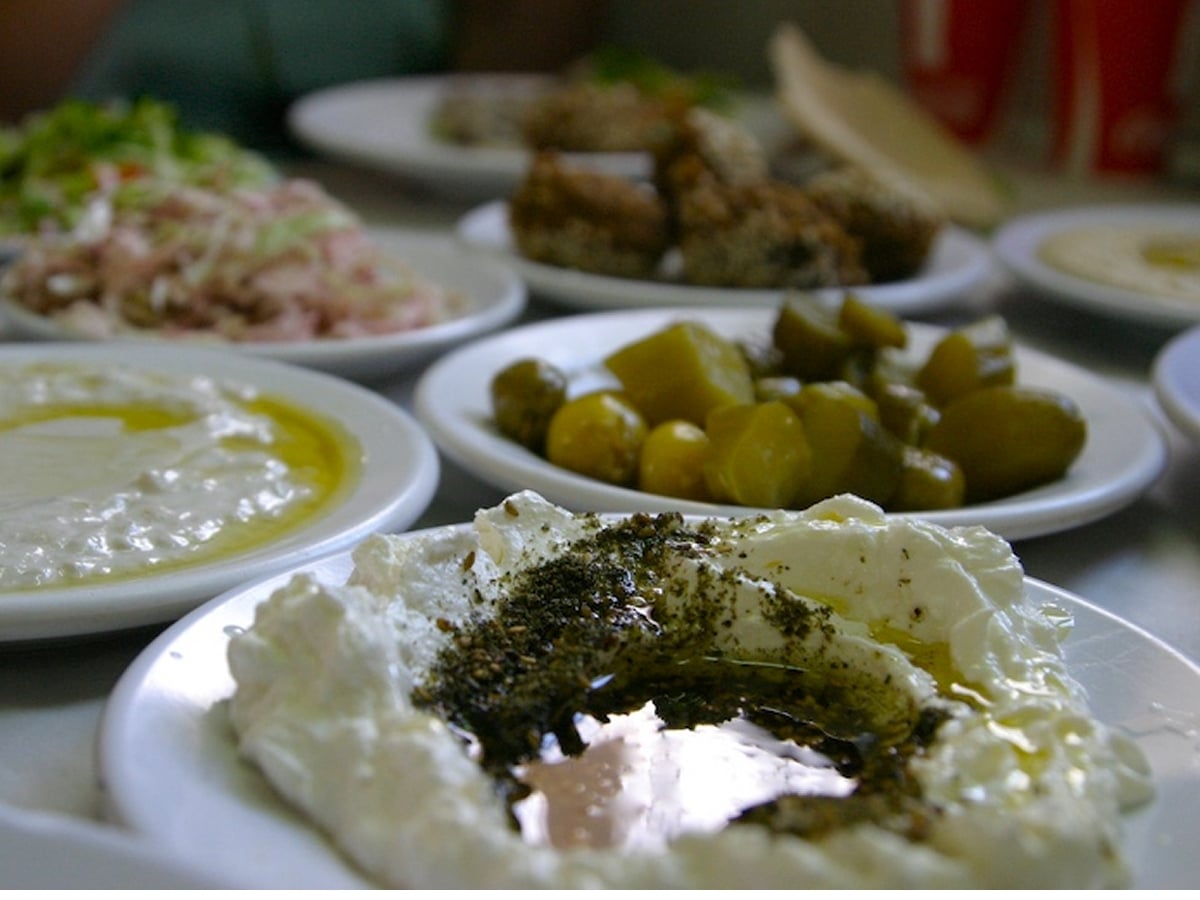
Here are some must-visit restaurants for a tasty break:
- El Babour – The Mill
Possibly the village’s most well-known spot. Set inside a former mill, carefully restored, it offers Druze dishes with a touch of refinement. Stuffed vine leaves, za’atar-scented flatbreads, grilled vegetables, smooth hummus, kibbeh, homemade sweets — everything arrives with intention. The setting is rustic, the welcome warm. Worth sitting down for. - Druze Hospitality Center
This goes beyond eating. Guests are welcomed into a real home, where the table fills up with family-style dishes — many of them unknown outside the community. It’s a place to talk, ask, listen. Recipes are shared, sometimes stories too. A quiet door into daily life. - Saj al-Carmel
Low-key, relaxed, and always busy. The saj flatbreads are made on the spot — cheese, spinach, or just za’atar and oil. Crisp edges, warm center. A favorite with locals, especially paired with a glass of homemade lemonade. - Café Carmel View
For something light — or just a pause. This small café serves strong Turkish coffee, herbal teas, sweet pastries, and fresh juices. The best part might be outside: a stunning view of the hills that opens up as you sip.
Isfiya
Region: Mount Carmel, 5 kilometers from Daliyat al-Karmel
High on the slopes of Mount Carmel, just a short drive from Daliyat al-Karmel, sits Isfiya — sometimes spelled Usfiya. Another Druze village, equally rooted, equally proud. Its name, drawn from Arabic, means “healing” — which makes sense, somehow. There’s something in the air here. A softness. A sense of stillness that doesn’t feel forced.
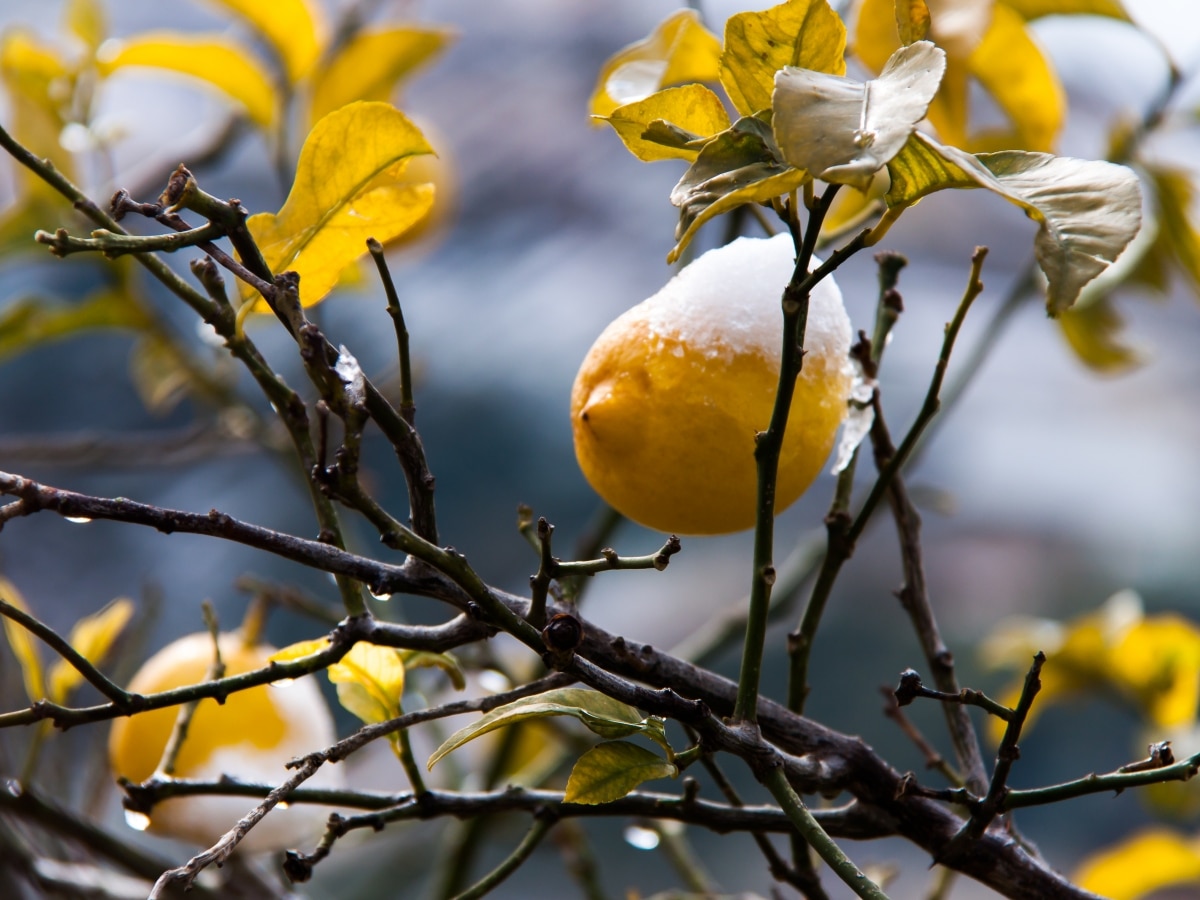
A strong spiritual heritage
Isfiya holds deep religious meaning for the Druze. It’s a place of faith as much as it is of history. The maqam Abu Abdallah, one of the sacred sites in the village, draws quiet visits rather than crowds. Families have lived here for generations, and many still follow the same spiritual rhythms, kept alive behind simple doors and narrow streets.
An unforgettable view
From the village heights, the view stretches far — forests below, and beyond them, the shimmer of the Mediterranean. A few trails lead out from the edge of town into the nature reserve nearby. Not hard hikes, but peaceful ones. The kind that weave together landscape and memory.
Julis
Region: Western Galilee, 34 kilometers from Haifa
In the hills of Western Galilee, Julis sits quietly — a small Druze village where things move slowly, and nothing feels put on. No crowds, no big attractions. Just daily life, held together by tradition and a certain steadiness.
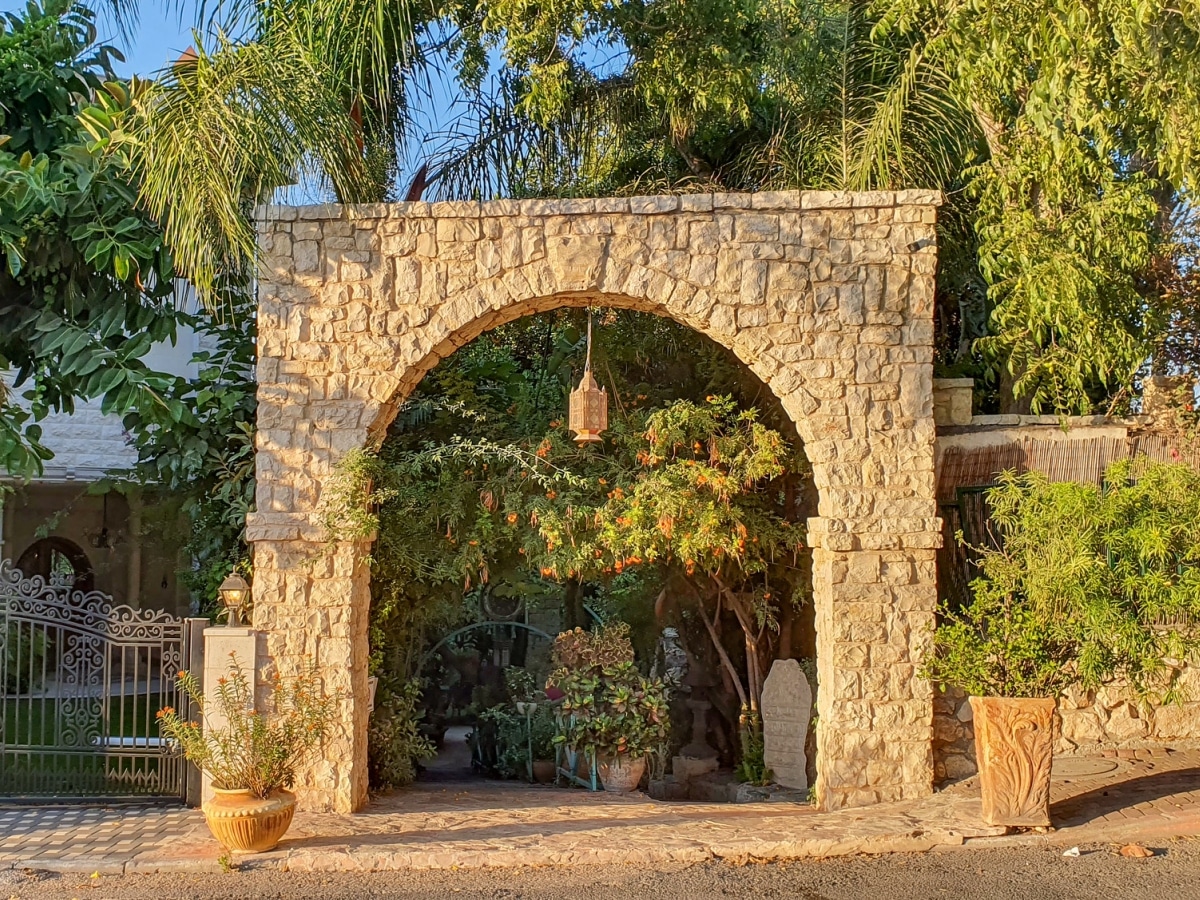
A life marked by the seasons
The rhythm of the land shapes everything here. Olive trees stretch along the edges of the village, fig branches droop with late-summer fruit, and small fields still grow what families will later share. Julis is known for its artisan olive oil — thick, peppery, pressed in the old way — and other local produce that reflects the seasons more than any calendar does.
Deep-rooted traditions
Some of the Druze community’s most respected families have long called Julis home. The house of Sheikh Amin Tarif, one of the great spiritual leaders of the 20th century, still stands as a quiet landmark — not grand, but deeply meaningful. His legacy continues to echo throughout the village.
Warm hospitality in simplicity
It’s the little gestures that define Julis. A nod. A chair pulled out. Turkish coffee, always offered — not as a custom, but as a way of saying: stay a little longer. Conversations often begin before introductions. Visitors come here out of curiosity, and leave having been welcomed, often without realizing how naturally it happened.
Almona Garden
Created by Naji Abbas in memory of his parents Mona and Rashid, Almona Garden (also known as El-Mona Gardens) unfolds over three quiet levels. Part garden, part collection, part tribute — it blends antiques, water features, flowers, statues, even live animals. Not loud or showy, but peaceful, layered, and full of personal touches. It’s open daily, including Saturdays, from 9:00 AM to 7:00 PM. A place to wander, slowly.
Maghar
Region: Galilee, 20 kilometers from Tiberias
Up in the Galilean hills, Maghar looks like many other villages — until you begin to notice what sets it apart. Druze, Christians, and Muslims all live here, side by side. It’s not a perfect balance, but a real one — built over time, tested, and still standing.
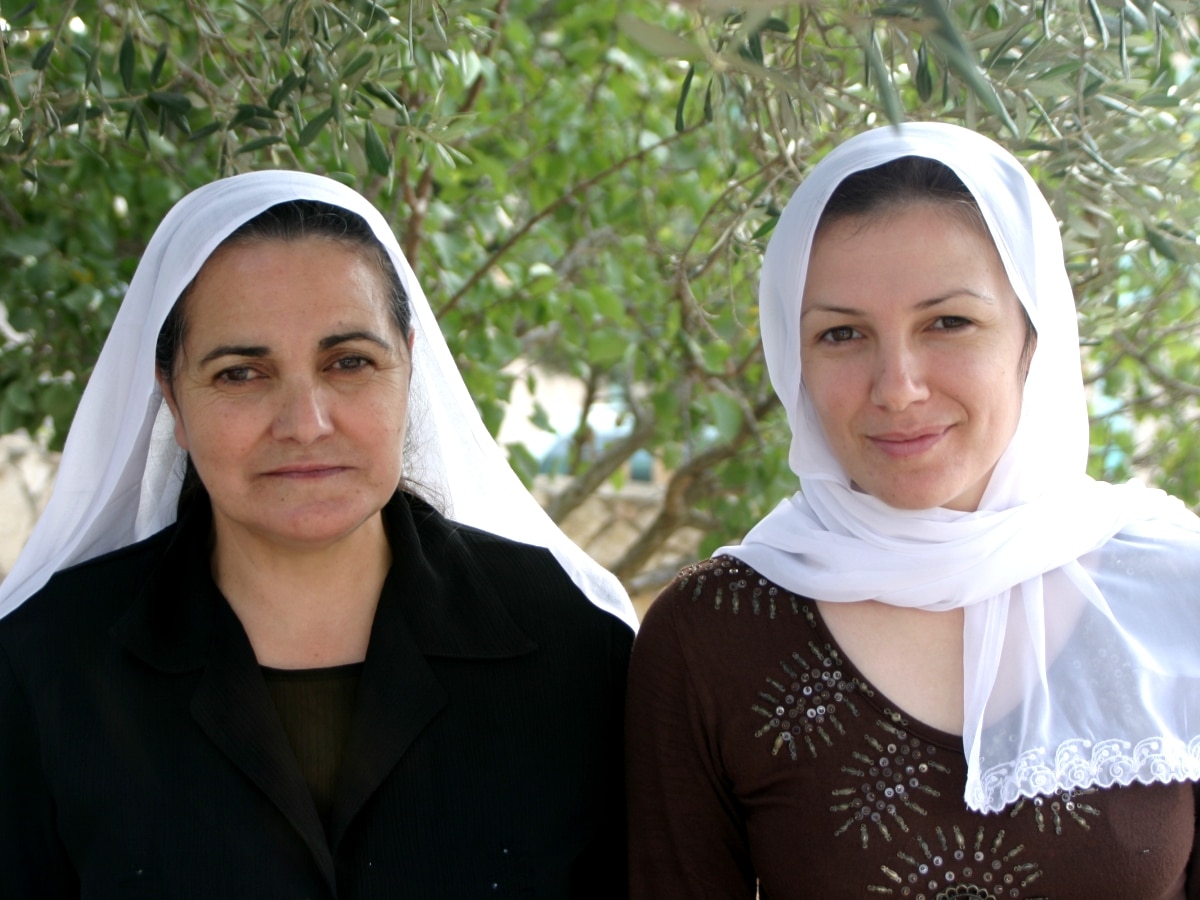
A human and cultural mosaic
Maghar feels like a village in conversation with itself. Churches, mosques, shrines — each with its own rhythm, but never far from the others. Walk the streets, and it’s all there: a morning bell, a call to prayer, a neighbor offering fresh flatbread across a fence. Traditions overlap without blending. The result is layered, but grounded.
An exceptional view of Galilee
The village looks out across the Sea of Galilee and the hills beyond. From high up, the view opens wide — hazy in the heat, golden near sunset. It’s one of those places where light changes everything.
Craftsmanship and traditions
Here, several women’s cooperatives keep local skills alive. Hand-stitched embroidery, small-batch soaps, seasonal jams — each made with care, often in family kitchens. Picking something up means more than just buying a souvenir. It’s a way to support the village itself — quietly, respectfully, without fuss.
Peki’in
Region: Galilee, 40 kilometers from Tiberias
Ancient stone houses, quiet alleyways, and a long memory. Peki’in holds a special place in the northern hills — not just for the Druze, but also in Jewish history. It’s one of those places where layers of faith and tradition sit side by side.
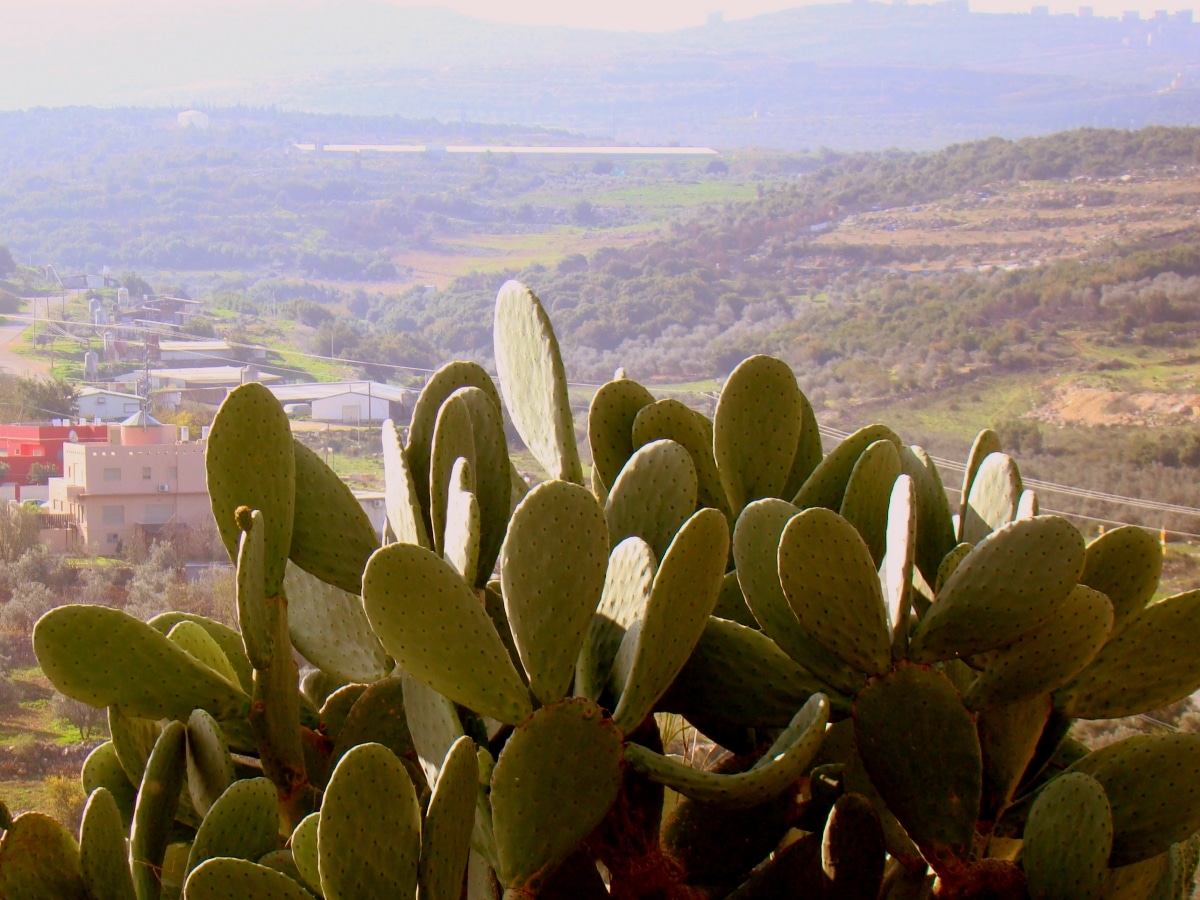
A place rich in history
Peki’in is closely tied to the story of the cave of the sages, where Rabbi Shimon bar Yohaï and his son are said to have hidden for thirteen years, immersed in Torah study. The ancient synagogue, still standing, offers a glimpse into that era. And in the middle of it all: a stone fountain, worn smooth by time, around which village life has revolved for centuries.
A strong Druze presence
While its roots are shared, today the village is mostly Druze. Their presence runs deep. Hospitality isn’t just a custom here — it’s how things are done. The Druze Heritage Center, created by local residents, offers more than facts: it’s full of stories, cooking, and conversation. A way to feel the community from the inside out.
Nature and serenity
Surrounding the village: olive groves, dirt paths, silence. Peki’in isn’t loud, and doesn’t try to be. The kind of place where time stretches out, and each corner seems to remember something.
Yarka
Region: Lower Galilee, 17 kilometers from Akko (Saint-Jean-d’Acre)
Yarka hums with life. One of the largest Druze villages in the country, it blends the old and the new without much ceremony. Between sacred spaces and shopping centers, between quiet homes and busy cafés — it all fits, somehow.
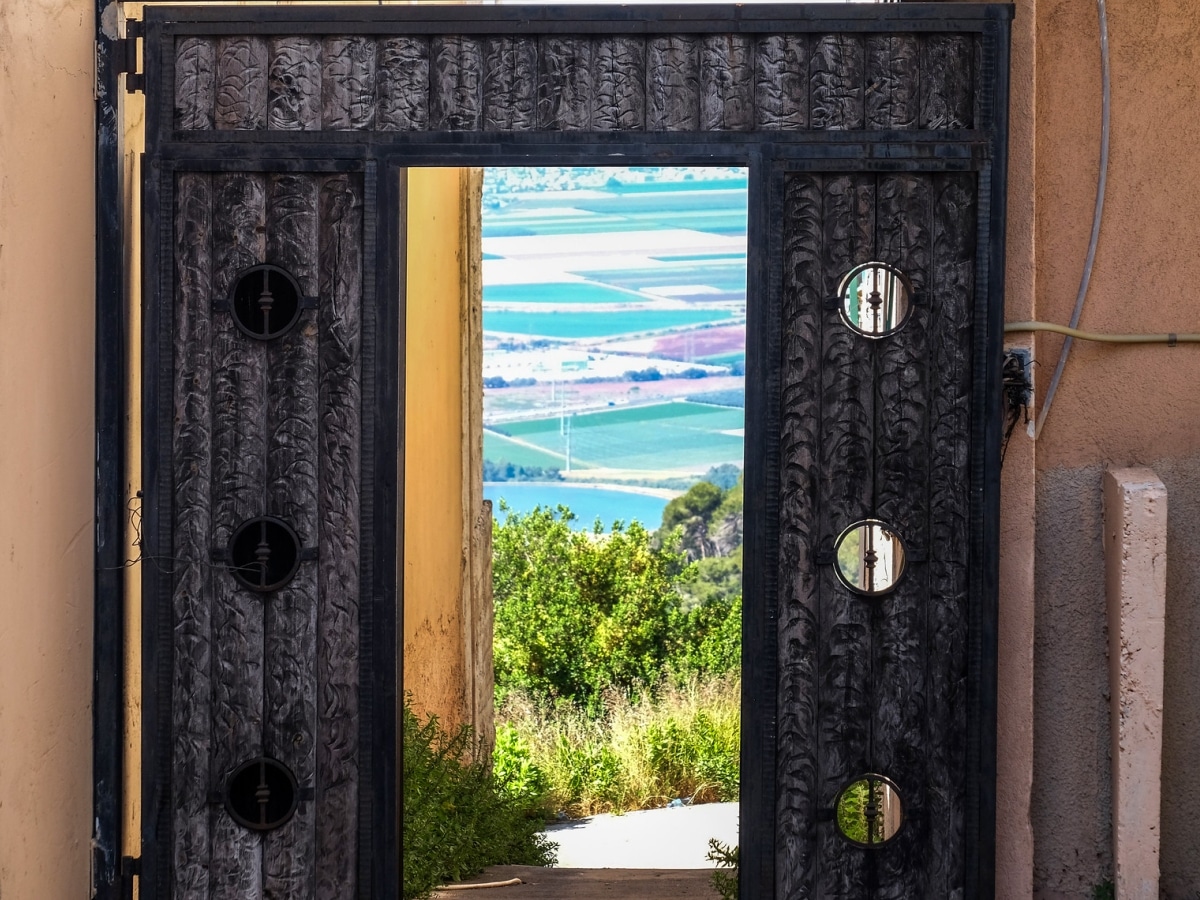
A village between modernity and traditions
There’s contrast, but not tension. The Yarka Mall — part curiosity, part convenience — draws visitors from across the region. Yet a few steps away, the older part of town tells a different story. Here, in the narrow streets, temples and family homes hold the village’s real heart. The balance between past and present feels lived-in, not staged.
Hospitality and transmission
Families here open their doors — not for show, but to share. Meals are simple, generous: sfiha, labneh, warm mana’ish topped with local herbs. And around the table, stories flow. Older generations still pass on the traditions, and the younger ones don’t turn away from them.
An ideal starting point
Yarka’s location makes it a useful base — close to Akko, with access to the coastal plains and Galilean hills. For those drawn to both culture and quiet landscapes, it offers something steady, in a setting that’s unmistakably Druze.
Majdal Shams: the Golan Heights balcony
Region: Golan, 61 kilometers from Safed
At the far northeastern edge of Israel, Majdal Shams clings to the slopes of Mount Hermon, gazing out across the Golan Plateau — and beyond, into Syria. It’s the largest Druze village in the region, but doesn’t try to be noticed. What sets it apart isn’t size — it’s the weight of history, the quiet resilience, and the way the land itself seems to hold its breath.
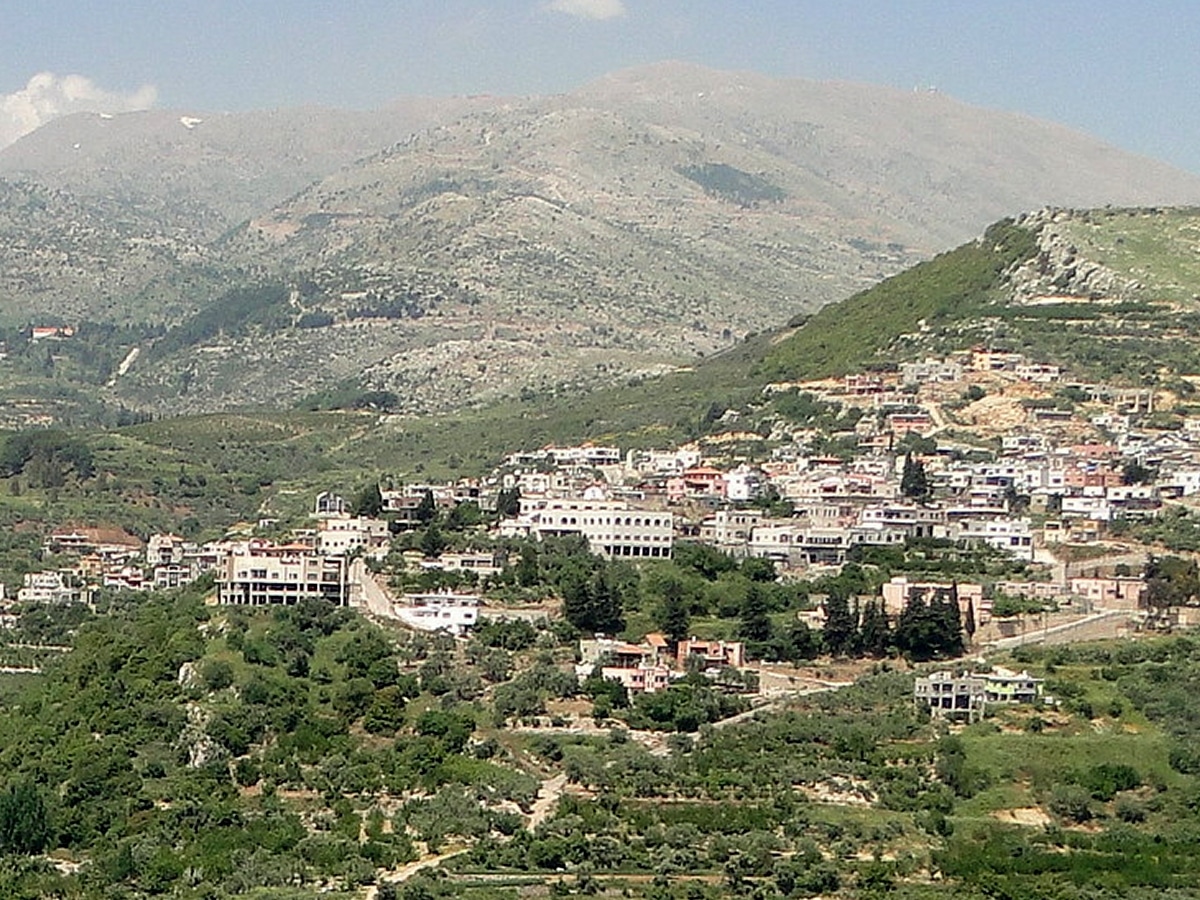
A living border
Majdal Shams sits just steps from the ceasefire line. For many here, family lives on the other side. The border isn’t just geography — it’s personal. Calls that can’t be made. Visits that may never happen. That tension has shaped the village’s spirit: proud, rooted, unshaken. Every house, every orchard seems to lean into the land a little more firmly.
Stunning nature
Winters come with snow. Heavy, silent, bright. Mount Hermon draws skiers — not many, but enough to bring a bit of movement. When the snow melts, trails appear. Wild, sometimes steep, but generous with views. Orchards bloom. The air softens. The silence returns, but it’s not empty.
Culture and memory
Memory runs deep here. There’s a Druze cultural center, a few local galleries, community spaces where people come to talk, to remember. Syrian past, Israeli present, Druze soul — it’s all there, layered but still open. Visitors don’t just pass through. They pause. Listen. Something in Majdal Shams asks for that.
Frequently asked questions (FAQ)
What is the Druze religion?
The Druze faith is a monotheistic tradition — closed, deeply philosophical, and unlike any other in the region. It first took form in the 11th century, branching off from Ismaili Islam, but quickly evolved into something distinct. A mix of Greek philosophy, Gnosticism, Sufi mysticism, and monotheistic thought, all tied together by a belief in the unity of God.
Druze don’t follow the five pillars of Islam. Their sacred texts — the Epistles of Wisdom — are kept for the initiated, known as Uqqal. They study in silence, away from public life. There’s no conversion. You’re born Druze, or not.
Where do Druze live in Israel?
Most Druze communities in Israel are found in northern villages, tucked into the hills or spread across the Galilean landscape. The main localities include:
- Daliyat al-Karmel and Isfiya — both on Mount Carmel
- Maghar, Peki’in, Julis, and Yarka — in the Galilee region
- Majdal Shams — high in the Golan Heights
Each of these villages carries its own rhythm, but all share that same balance — between tradition and today.
Can you visit a Druze village?
Yes. And more than that — you’re often welcomed in. Visiting a Druze village isn’t about ticking off landmarks. It’s about conversations, shared meals, quiet moments that stick.
In places like Daliyat al-Karmel, travelers can take part in guided walks, try weaving or cooking workshops, and meet the people behind the markets and guesthouses. Hospitality isn’t a performance here. It’s just how things are done.
What to eat in a Druze village?
The food? Honest, rich, and full of memory. Recipes passed down in kitchens, not written down. Think Levantine flavors, but rooted in local soil.
- Labneh — thick, tangy fresh cheese, drizzled with deep green olive oil
- Stuffed grape leaves — wrapped tight, with lemon and herbs inside
- Majadra — rice, lentils, and caramelized onions, cooked slow
- Druze flatbreads — known as saj, folded with za’atar, cheese, or greens
- And for something sweet: katayef or knafeh, sticky, warm, and hard to resist
The meal usually comes with tea — minty, strong — or coffee laced with cardamom. Each bite tells part of the story.

